This post may contain affiliate links which may generate a small commission from clicks that result in a purchase.
Growing an olive tree indoors is becoming trendy. The rise of portable tree sales makes it possible for almost anyone to learn how to grow olive tree indoors without having a large space. With the increase in popularity comes the challenge of olive tree care and maintenance, especially in climates with hard winters.
Briefly, growing an olive tree indoors as a houseplant is fun and quite easy. And as a decorative indoor plant, an olive tree has plenty of merits. Without further ado, let’s check 20 insightful facts on how to grow olive trees indoors in order to enjoy some heaven at home.
- 1. Poor Drainage Can Damage Indoor Olive Tree
- 2. Overwatering Can Kill Olive Tree Indoors
- 3. Olive Tree Also Hates to Be Too Dry
- 4. Moisture Meter Can Save Olive Tree’s Life
- 5. Olive Tree Indoors Dislikes Cold Water
- 6. Olive Tree Loves Nutrient Nitrogen
- 7. Fertilizer Spikes Are a Bad Idea for Indoor Olive Tree
- 8. Olive Tree Needs to Be Near Your Sunniest Window
- 9. Too Much Light Can Make Olive Tree Sleep-Deprived
- 10. Olive Tree Indoors Needs to Moisturize as Much as You Do in Winter
- 11. Olive Tree Hates Abrupt Temperature Shifts
- 12. You Should Ask your Olive Tree if it’s Having a Good Day
- 13. Don’t Expect Olive Tree Problems to Disappear on Their Own
- 14. Panicking at Olive Tree Leaf Loss
- 15. Pruning will Shape Your Olive Tree Indoors
- 16. Olive Tree Seasonal Relocation Can Be Stress-Free
- 17. Harvesting your Olive Tree Indoors is Real Fun
- 18. Repot Your Olive Tree to Boost It's Growth
- 19. Things Needed to Grow Olive Tree Indoors
- 20. Shopping Secrets on Olive Tree Indoors
- Conclusion
1. Poor Drainage Can Damage Indoor Olive Tree
In general, an olive tree requires outstanding drainage. No doubt, soggy bottoms can kill the olive tree. As a result, you need to find an adequate pot with drainage holes where water flows right through the pot and out.
Well-drained soil is also essential. Use an indoor potting mix containing coconut coir which holds and releases water and helps soil easily rewet. Better yet, buy premixed organic potting soil formulated specifically for olive trees with adjusted acidity (= pH 6 – 7).
For instance, I mix my potting soil with large handfuls of shredded hardwood mulch or coco mulch. It helps to reduce evaporation and retain moisture at the critical surface-root zone. I use natural cedar chips, but pebbles or preserved moss decorative mulch is great as well.
The proportion of my olive tree mix is one-third shredded wood to two-thirds potting soil. As well, I fill the drainage dish with stones to provide air circulation. And the most important, that my olive tree pot has large drainage holes in the bottom.
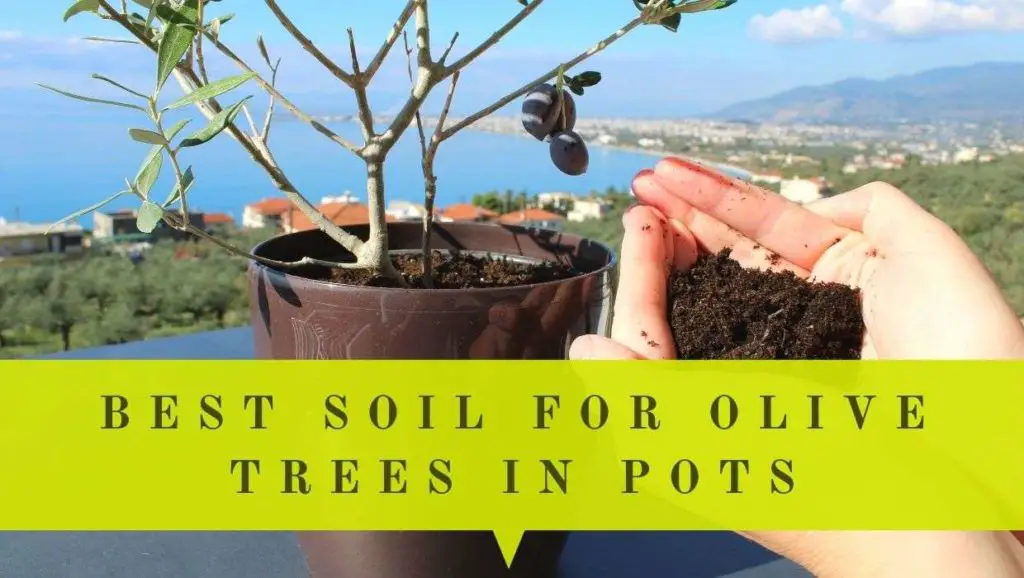
Besides, if your olive tree is set in an ornamental, closed pot, it is a must that you never allow it to stand in water. If the water stands for more than 12 hours after watering the olive tree, drain it (see fact number 2 below). More work for you, but this effort is necessary on how to grow your olive tree indoors successfully.
Signs of poor drainage
You can feel the constantly moist soil of your olive tree in a pot. Wet pot bottoms. Fungus gnats in the room. Yellow leaves. Drooping leaves. Leaf drop.
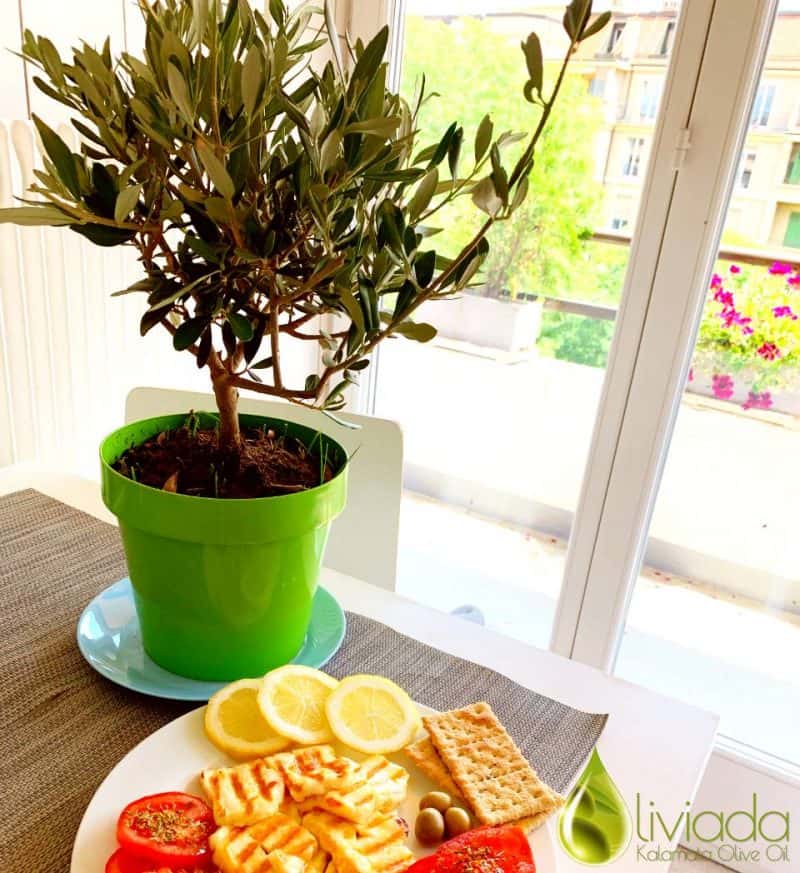
2. Overwatering Can Kill Olive Tree Indoors
Generally, an olive tree hates having wet roots, and overwatering is the most common cause of its poor health. So do water deeply, but only water again when the olive tree pot is close to dry.
One of the ways to water your olive tree indoors you drench the pot and drown the soil allowing the water to run freely from the drainage holes. To do this, you keep an olive tree in a pot on a stand above a large plastic dish that can accommodate one gallon of runoff.
For instance, if the water in the dish touches the bottom of the pot, I let it remain in the dish for up to 12 hours. Because the thirsty tree will absorb this water again. But after 12 hours, I drain off excess water.
I also like to use terra cotta pots for my olive tree indoors. If the outside of the terra cotta pot is dark and damp at the base, this is a sign that the soil in the bottom of the pot is too wet (even if the top is dry), which is not a good sign, so I hold off on watering.
In terms of touch and feel senses, the top inch or two (i.e. 2.5 – 5 cm) of soil will also transition from dark and moist to the touch to lighter and dry. Then, time to water.
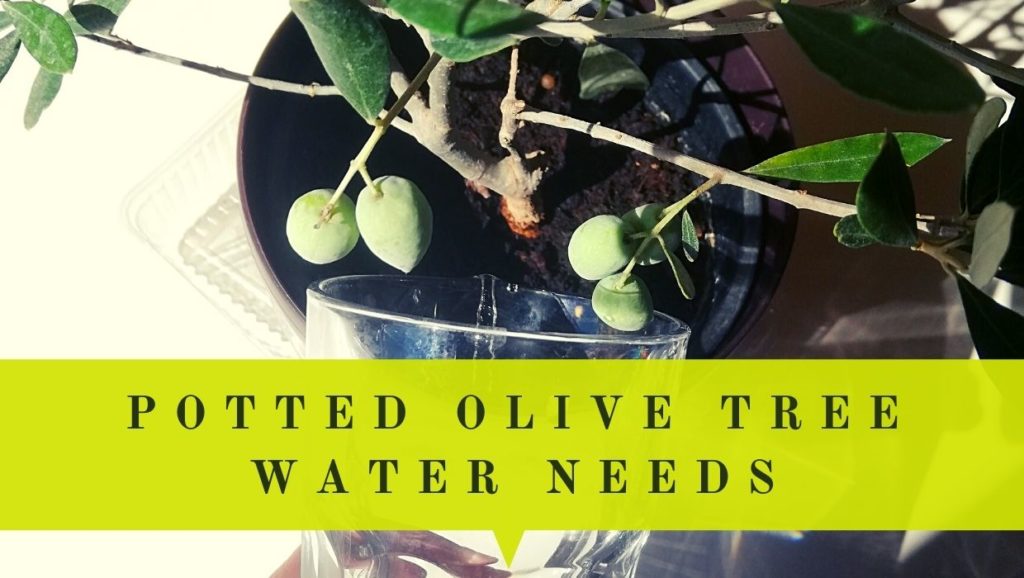
Signs of overwatering
The olive tree soil stays moist every day. The bottom of a terra cotta pot looks dark, or green, and is wet to the touch. Water stays standing in the dish. The leaves are drooping, but not dry and crisp.
The leaves gradually turn yellow all over and drop. Little bugs like fruit flies drift everywhere – these are fungus gnats and are an indication that your olive tree pot is staying moist too long.
Read more about olive tree overwatering symptoms here.
3. Olive Tree Also Hates to Be Too Dry
You’ll need to increase watering and fertilizing (see number 6) when growing olives indoors because of the restricted roots and a smaller amount of soil to hold the water and nutrients. You don’t want the roots to dry out, but you also don’t want them sitting in soil that’s constantly wet since olive and other trees can experience root rot.
Since the amount varies based on various factors, it’s best to water it enough that it reaches the root zone and runs out the drainage holes. Consistent moisture oriented more toward dry than wet is perfect.
It is an ineffective practice to water your olive tree indoors with a few cups here and a few cups there. For this reason, establish a watering schedule. For example, I water once every seven to ten days. Just water the olive tree indoors deeply till water runs from the drainage holes, and observe how fast or slowly the pots dry out.
If you’d like more information about watering olive trees, feel free to check out my recent post: how often to water olive trees indoors & how much.
Signs of underwatering
The soil pulls away from the sides of the pot. When you water the tree, the water sits on top of the soil for a while before draining. Water runs quickly through the pot and out. The leaves droop, and turn crisp; branches die.
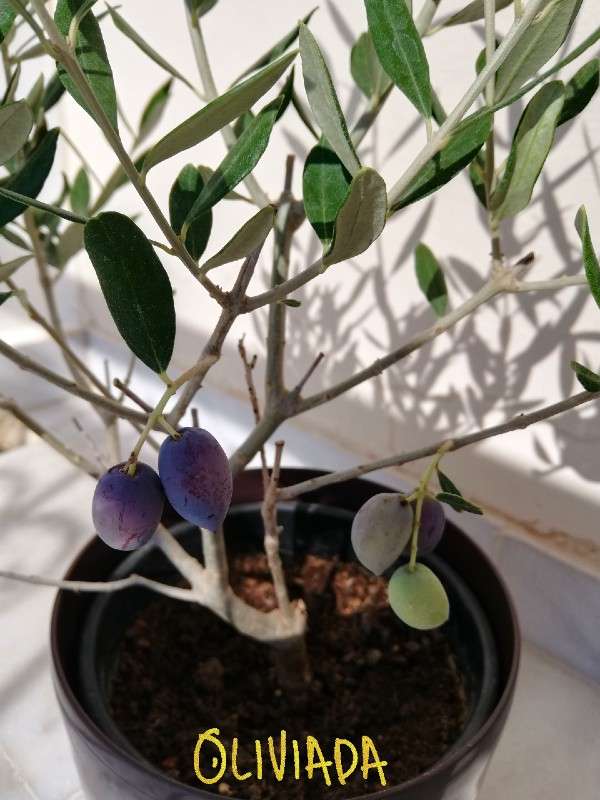
4. Moisture Meter Can Save Olive Tree’s Life
To help take some of the stressful guesswork out of watering olive trees indoors, buy a moisture meter. Insert it fully into the soil. In larger pots, it is helpful to take two to three readings in different spots.
Last update on 2024-07-12 / Affiliate links / Images from Amazon Product Advertising API
I check the soil with a moisture meter regularly and I water the olive tree again when it reaches 1 to 2. Then, after drenching the olive tree, it should read 10. Very simple and easy to use a moisture meter and how to do it correctly read our complete guide on how to use a moisture meter for olive trees.
Definitely, less headache to you with regards to under or overwatering your adorable olive tree indoors.
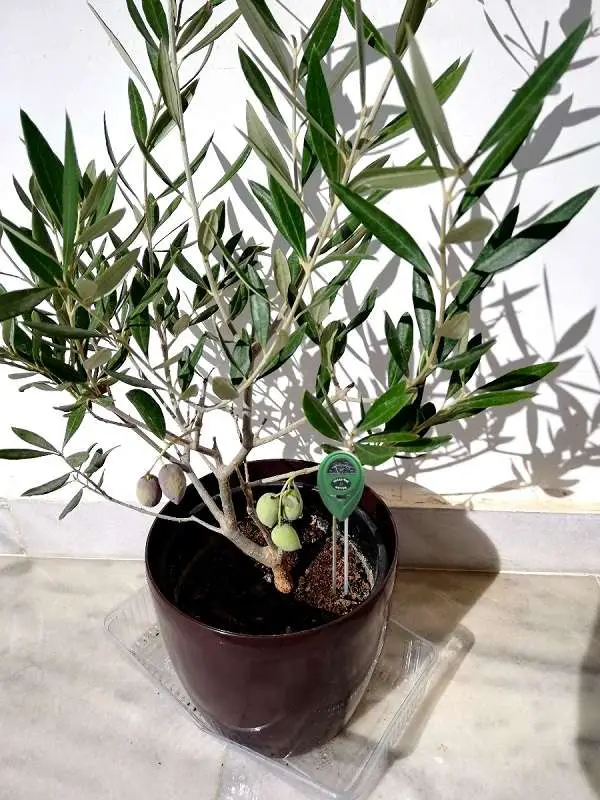
5. Olive Tree Indoors Dislikes Cold Water
The water for your olive tree should be warmish or at room temperature. In fact, you can mix a little hot water with cold tap water in a large measuring jug.
Signs of freezing water
Your olive tree yellowing leaf veins can also indicate that temperatures are too cold for an olive tree to absorb nutrients. Leaf drop.
6. Olive Tree Loves Nutrient Nitrogen
Despite growing olive trees indoors, they stay hungry and love nutrient nitrogen. In milder climates, where they overwinter outdoors, they slow down and feed less, but not inside. Inside, it’s summer. Well-draining soil also means food washes out quickly: Every time you water, food is being made available to your tree.
A complete fertilizer designed specifically for olives provides your tree with needed nutrients. The prime time for feeding olive trees is beginning in late winter or early spring as you see new growth until late summer or early fall when growth slows.
You’ll generally want to fertilize every other month during the growing season. Follow package directions for specific fertilizer timing and amounts.
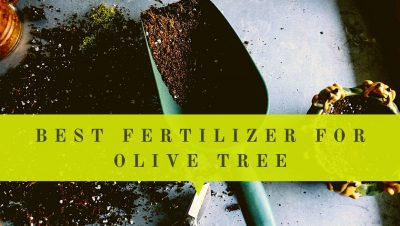
I feed my olive tree monthly with nitrogen nutrients, which provides annual nutritional needs (following the dosage instructions on the bag). Always, water your tree immediately after fertilizing. You can also fertilize with an organic fish emulsion that adds proteins and enzymes to soil or natural seaweed fertilizer for better plant growth every month for the first year.
In general, you should establish your tree watering and fertilizing routine and learn tricks on how to grow your olive tree indoors successfully.
Signs of underfeeding
Your olive tree may have yellow veins on the leaves (which can indicate a nitrogen deficiency). Drooping leaves. Falling leaves. Always, leaves should be a healthy green.
7. Fertilizer Spikes Are a Bad Idea for Indoor Olive Tree
Avoid using fertilizer spikes in indoor olive tree pots. Generally, they can burn the trees’ roots. On another hand, using organic fertilizer spikes decreases the chances of damaging your plant. If you use synthetic fertilizer, never exceed the recommended dose.
Signs of overfeeding
Your olive tree may have burned edges to leaves. Leaf drop. Very slow growth.
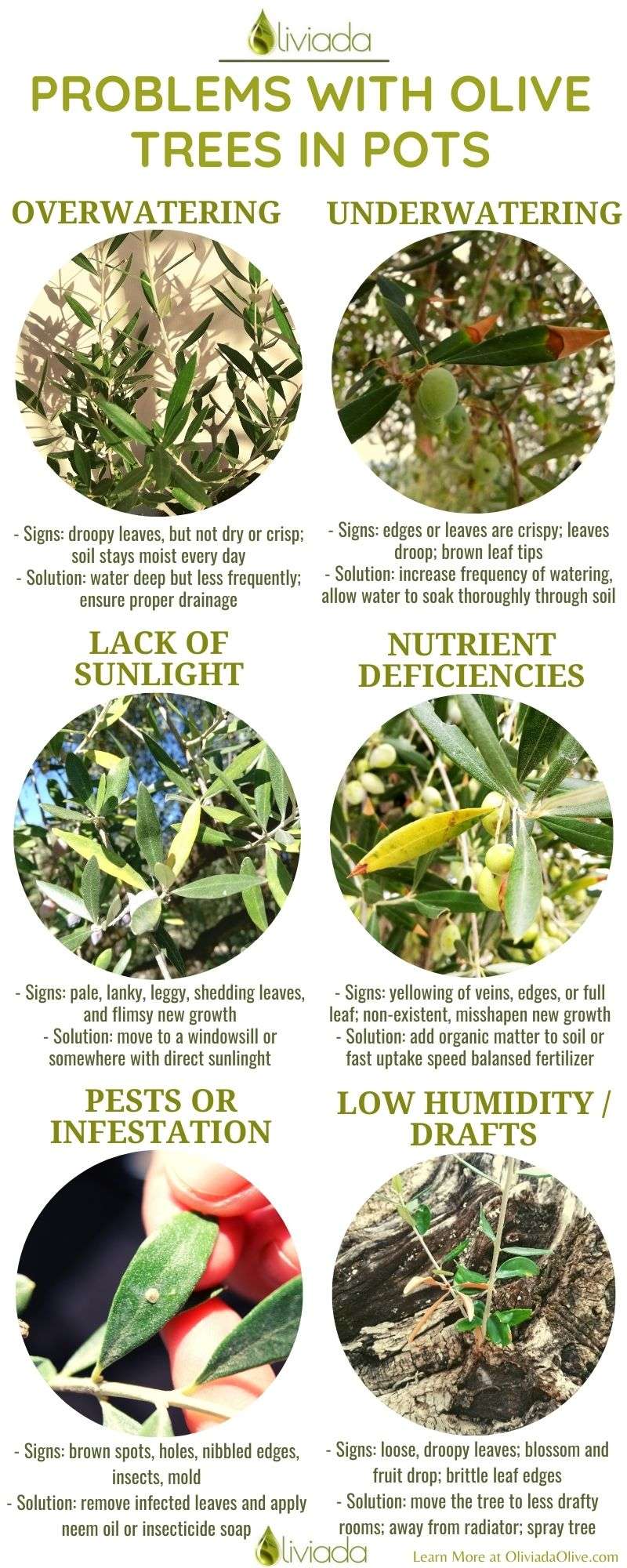
8. Olive Tree Needs to Be Near Your Sunniest Window
Just like outdoor olive trees, olive trees grown in pots indoors need at least eight hours of sunlight each day. Unfortunately, a dark northern winter window is insufficient. But if you have a sunny spot, your olive tree may thrive without any supplemental light.
However, if you must keep an olive tree in a less sunny room, boost the tree with grow lights. If you have a darker situation, you may need full-spectrum LED grow lights to give the tree the light it needs to truly thrive.
In cases where a tree receives not enough natural sunlight, a simple T-5 fluorescent grow light system can provide enough supplemental light. For instance, the T5 system delivers performance, flexibility, and high lumen output in any growing environment. In addition, these systems allow you to choose multiple hanging configurations to meet your home design.
Signs of not enough light
Your olive tree grows poorly. Green leaves drop from the tree.
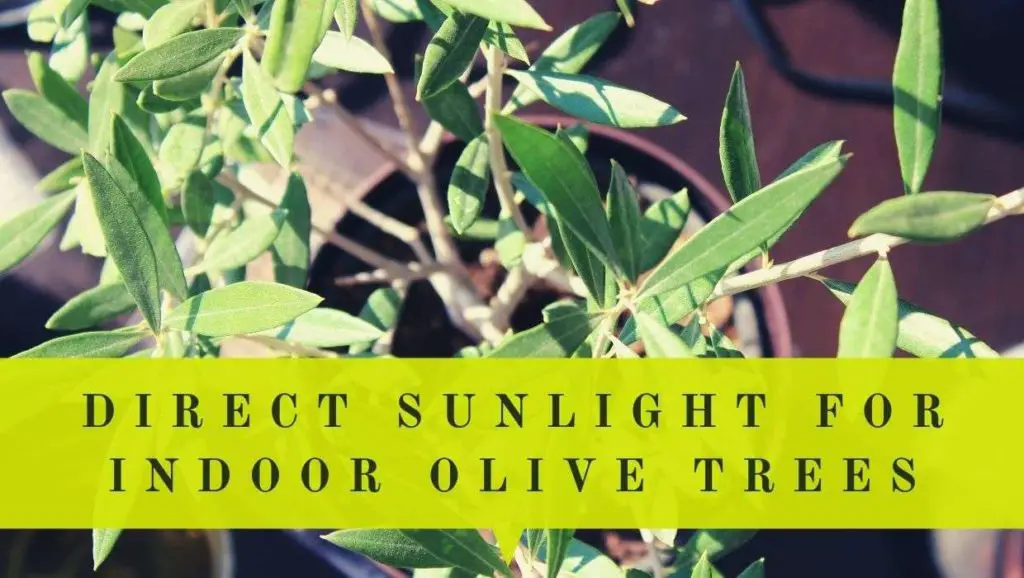
9. Too Much Light Can Make Olive Tree Sleep-Deprived
Indeed, olive trees can have too much light. It is a mistake some people in northern climates make is to give the olive tree 12 hours or more of supplemental light. As a result, it causes the olive tree indoors to go into a vegetative state. Think of it as sleep-deprived. And your olive tree is stressed.
Generally, 8 hours of light for your olive tree indoors is more than sufficient. The point is to imitate the natural season as much as possible because the olive trees have specific seasons of flowering and fruiting.
By exposing the olive tree to too much light it can interfere with its normal production cycle and limit its ability to produce fruit. It helps if you keep the night cool.
Signs of too much light
Lack of growth of your olive tree. Leaf drop. No flowering and fruiting.
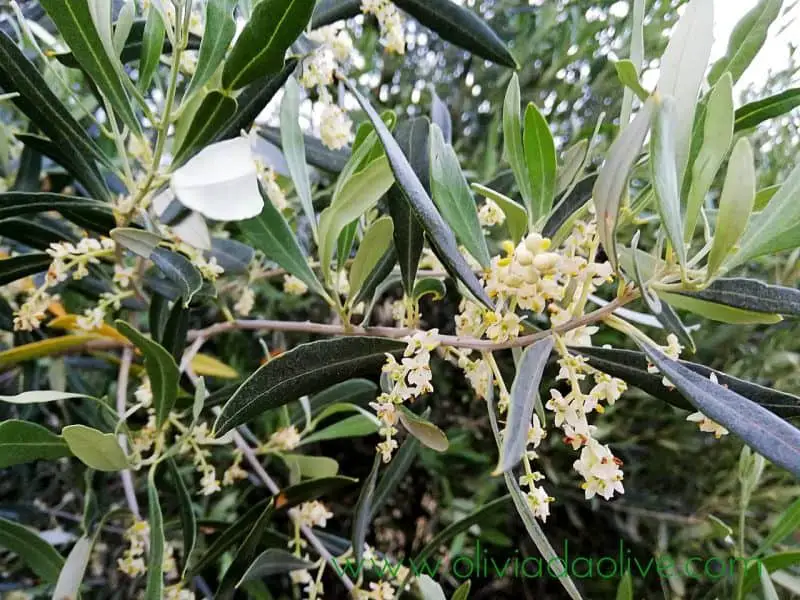
10. Olive Tree Indoors Needs to Moisturize as Much as You Do in Winter
One of the ways to keep an olive tree moisture is to place its pot on a humidity tray with washed river rocks. So water stays in the tray but does not touch the pot, raising ambient humidity.
On another note, we know indoor winter air is notoriously dry. We moisturize, but what can our olive trees do? At the very least, mist the olive tree indoors daily with a spray bottle. But if you want to cut down on the time spent misting, invest in a humidifier. Plant lovers recommend a Honeywell Germ-Free Cool Mist humidifier to boost humidity levels significantly.
Signs of low humidity
Your olive tree has brittle leaf edges and leaf drop.
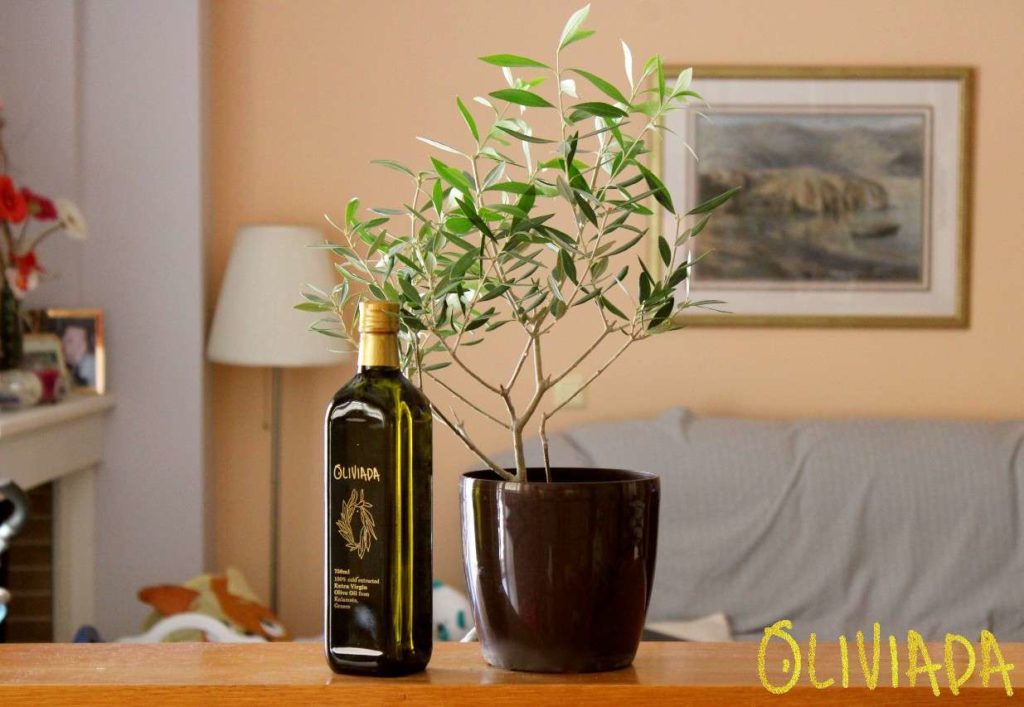
11. Olive Tree Hates Abrupt Temperature Shifts
Olive trees dislike abrupt temperature shifts, so be sure to protect them from chilly drafts and blazing heaters. Opening the nearby door or window for them on a cold day stresses olive trees (and all plants). Stressed olive trees are susceptible to diseases and pests.
Always, it’s best to keep your tree away from spots near exterior doors, radiators, fireplaces, and ovens where temperature fluctuations can happen.
Signs of air stress
Your olive tree may have browning leaf tips. Leaf, blossom, and fruit drop.
12. You Should Ask your Olive Tree if it’s Having a Good Day
It’s all about paying attention to live organisms. If you do not check your olive tree every day, even when it seems healthy, you will not observe the early signs of problems.
Make it a ritual (consider it olive tree bathing, and therapeutic) and master how to grow an olive tree indoors. Observe the overall form of your tree. Is the olive tree looking well-shaped and perky, or droopy and off? Go closer and look at leaves, turning them over. Are they grey-green and upright, or beginning to yellow and fall?
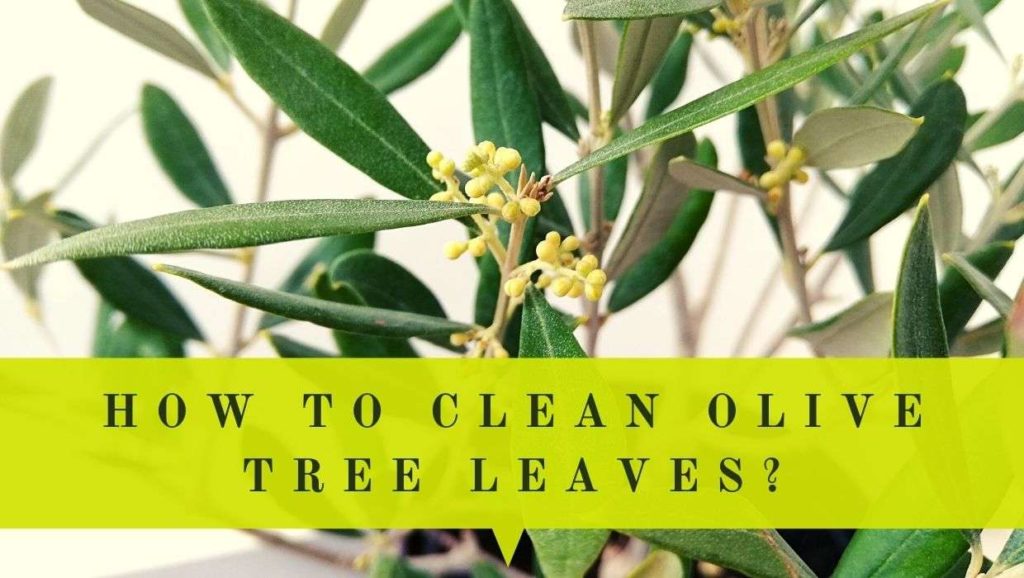
A few slightly yellow leaves can be normal as the olive tree moves chlorophyll from older leaves to new, but perhaps it is underfed or overwatered. If you see tiny cobwebs on leaves you may have the beginning a spider mite infestation. Is there shiny, sticky honeydew on some leaves? You have a soft scale issue and you can read our article on how to remove scale insects of the olive tree.
Imagine if you were a pest it would be a dream come true observing a delicious olive tree just sitting there indoors in a warm environment. Winter is the time to be watchful.
Signs of neglect
Sooty mold. Cobwebs. Dropping leaves. Yellow leaves. No flowering and fruiting.
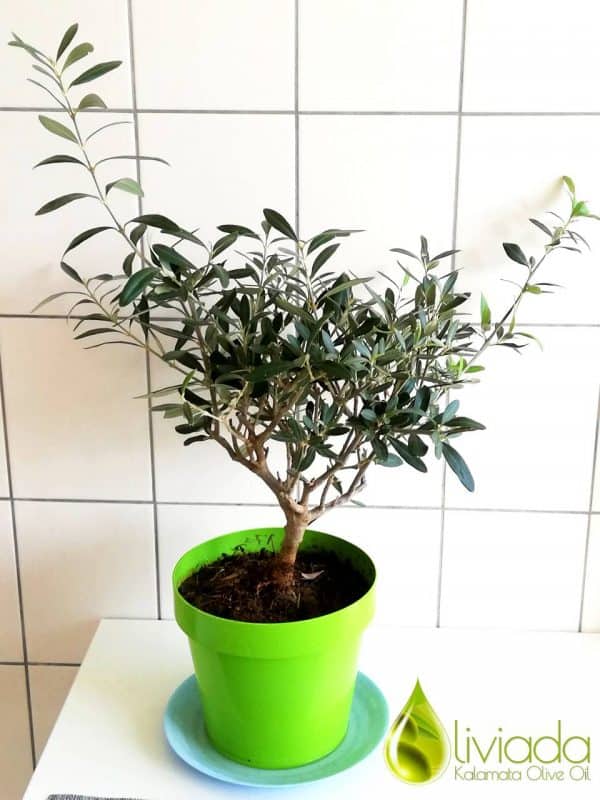
13. Don’t Expect Olive Tree Problems to Disappear on Their Own
Problems will not resolve themselves so you need to give some time and effort to learn how to grow an olive tree indoors. So try to identify your tree problem or pest yourself if any and take immediate action.
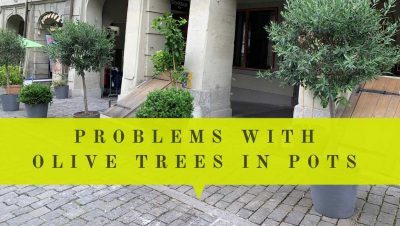
For example, a chronically over-watered tree will die. As well, the olive tree is vulnerable to scale, spider mites, mealybugs, and aphids. So be on the lookout for early signs of infestation such as curled, speckled, or yellowing leaves; sticky residue; and silky webs between the branches.
If you find scale insects on the undersides or topsides of the leaves’ midribs: simply squash them with your nails. You can also wash them off the leaves with liquid dish soap, using a damp sponge and a paper towel. Spritz the tree soap-free with a spray bottle of tepid water or rinse off in the shower if you can lift the pots.
Firstly, use the least toxic treatments available, such as insecticidal soap to combat pests as needed. Then, if the issue is serious, spray with organic Neem oil or horticultural spray oil, and repeat every three days until the invaders have left.
Signs of ignoring your olive tree
Your olive tree has a general disease, depending on the source of the issue. Pest related: curled, speckled, or yellowing leaves; sticky residue; silky webs between the branches. No flowering and fruiting.
14. Panicking at Olive Tree Leaf Loss
If you notice your olive tree is losing some leaves, don’t panic and don’t start over-watering the tree or even to move it to another spot. The solution is to pick a sunny window (preferably south-facing away from a heating grate) and stick with it for the whole winter season. As long as you don’t overwater the tree, it will usually recover.
As well, it is common for olive trees to lose some leaves (even all their leaves) when they first transition from outdoors to inside.
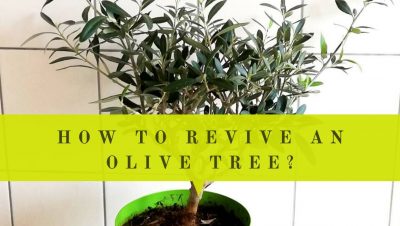
15. Pruning will Shape Your Olive Tree Indoors
Olive trees indoors generally don’t require a lot of pruning, but you need to occasionally cut away some branches. Pruning away weak, broken, or damaged branches help your olive tree stay healthy. You may also want to prune to shape your olive tree and control the size.
Prune back your olive tree’s branch tips when the new-growth branch reaches about 10 – 15 cm (i.e. 4 to 6 inches) long. However, too much pruning or incorrect can reduce your olive fruit harvest. For this reason, I put together 7 steps guidelines on how to prune olive trees in pots to improve the growth and fruitiness of the tree.
It’s best to prune olive trees between January and March after you’ve harvested your fruit for the year. In addition, intense sunlight can cause sunscald or bark rot on cut areas if you prune the tree in summer.
Signs of lack of pruning
Your olive tree has broken or damaged branches. Branches reaching your ceilings. Random branches require cut to shape the olive tree.
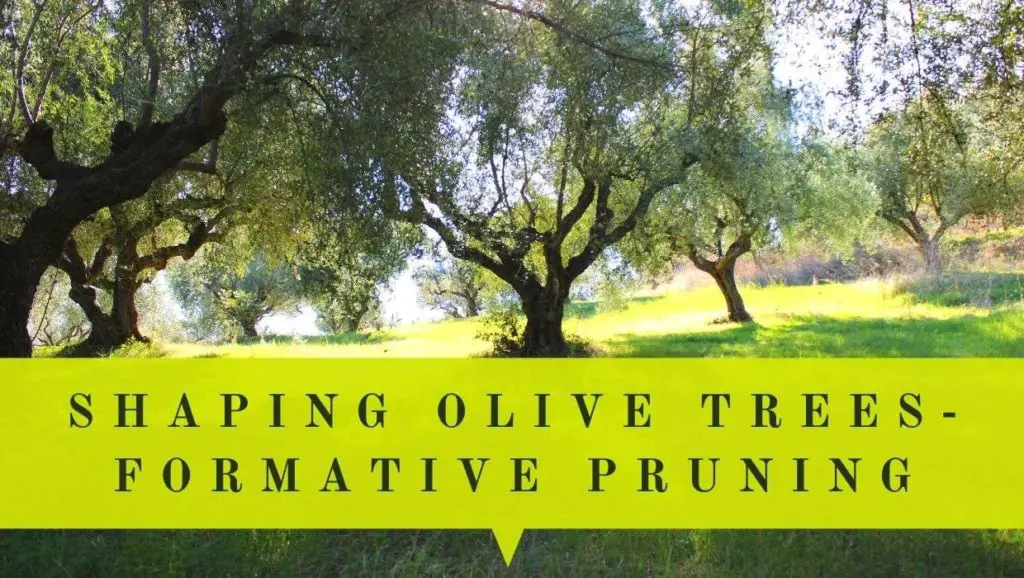
16. Olive Tree Seasonal Relocation Can Be Stress-Free
Indoor potted olive trees can go outdoors to get their sunlight on warm days and decorate your patio or terrace. Olive trees are typically OK outdoors once the air temperature stays above 55 °F (12 °C) overnight.
It’s a good idea to slowly acclimate your tree to the new environment, starting with a sheltered spot for several days followed by a spot with filtered light for a few more before putting it outdoors in direct sunlight. It’s very important to make a slow, smooth transition of your olive tree to avoid shock and scorched leaves.
When you bring your olive tree back indoors for cold winter, you want to do the same thing, getting the tree slowly used to inside conditions. You may also want to rinse off the plant to get rid of outdoor debris and to make sure it doesn’t have any pests hiding in the leaves.
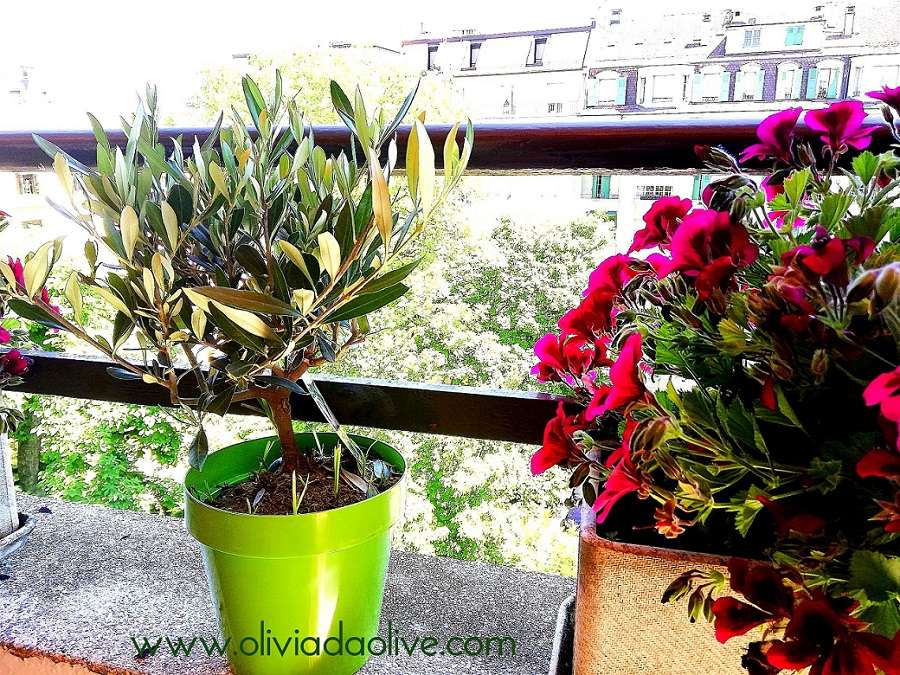
17. Harvesting your Olive Tree Indoors is Real Fun
Whether or not your olive tree bears olive fruit, you will have a unique and beautiful houseplant that will impress your guests. However, if you take your time and learn how to grow your olive tree indoors right, you will be rewarded with the healthiest of homegrown olive fruits. Which anyone would agree is well worth the effort.
Olive trees planted from a nursery will produce fruits much more quickly, even the first year. Once your olive tree finally produces olive fruit, it will likely produce a large amount in the first harvest year, dropping many and putting energy into growing just a few to maturity. This is totally normal and is actually a good sign!
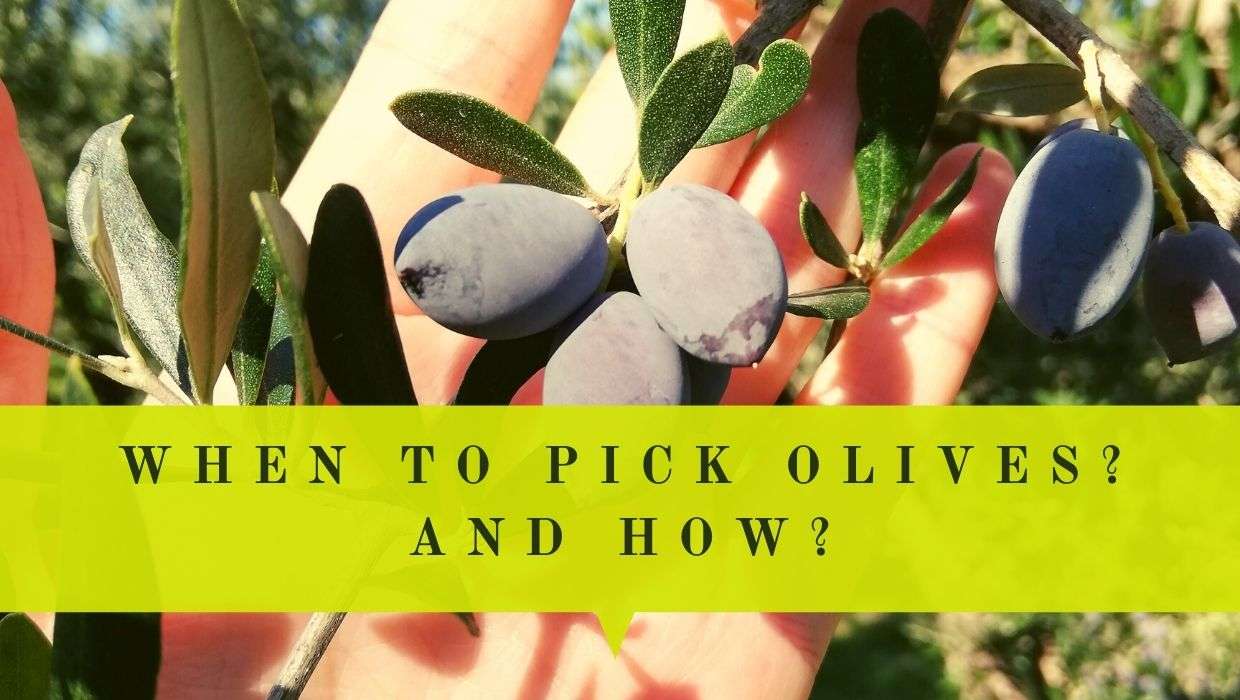
18. Repot Your Olive Tree to Boost It’s Growth
Repot your olive tree during the growing season when the tree’s roots fill the pot. For repotting, choose a container or a new pot that is the next size up from the current pot. You should plant the olive tree in a slightly acid, loam-based compost potting mix, such as a mixture of peat moss, organic compost, and some sand or grit.
Signs of repotting need
It is a too-small pot for your olive tree. The olive tree root system filled up the pot. Roots getting out from drainage holes or the surface.
In case you want to grow companion plants for your olive tree to create a stunning landscape, then choose larger pot or container to fit all the plants and keep space between them.
19. Things Needed to Grow Olive Tree Indoors
I have collected a few must-have items you should possess for successful olive tree growth indoors. It can be replaced with things or tools you already have at your home. But if you decide you would like to get one, I have included image clickthrough links into Amazon for you to save some time while searching online.
- Germ-Free Cool Mist Humidifier (Honeywell) helps to improve air circulation & energy savings in your home. Add cool moisture to dry air with this quiet humidifier.
- Moisture Meter is easy to use and makes your olive tree more healthy with a soil moisture sensor reader.
- Gardening Ceramic Pot with drainage holes suitable for Indoors and Outdoors.
Last update on 2024-07-12 / Affiliate links / Images from Amazon Product Advertising API
- Premium Organic PH Potting Mix – contains many micro-nutrients; is perfect for Indoors and Outdoors Trees.
- Balansed Olive Tree Fertilizer which provides annual nutritional needs.
- Full Spectrum LED Grow Lights keeps olive trees and other plants healthy and thriving.
Last update on 2024-07-12 / Affiliate links / Images from Amazon Product Advertising API
20. Shopping Secrets on Olive Tree Indoors
If you prefer an olive tree that will flowering and fruiting right away, choose a 1 to 3-year-old olive tree depending on the variety. For example, Greek Koroneiki or Aberquina olive tree can bear fruits in the first year under perfect indoor conditions.
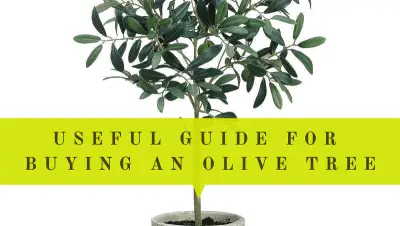
There are many varieties of olive trees, however, you should know that some of them can grow well over 6 meters (= 20 feet) tall, which probably would not work out very well inside your house. With this fact in mind, it is best to choose a dwarf variety, since they only grow to about 2 meters (= 6 feet) tall and can be pruned to be kept shorter.
So look for Arbequina or Koroneiki or Frantoio olive tree variety. As well, the generic Olea Europea name, the European olive tree, is a good choice for beginners. It has grey-green leaves, small insignificant flowers and fruit, and has a high tolerance for indoor conditions. Buy one from a reputable nursery or garden center to avoid diseased or inferior plants.
Conclusion
In summary, your olive tree can grow in a pot or container, thriving indoors during cold weather months before basking outside in spring and summer. With your attention and care, your lovely olive tree will have tangible results and genuinely therapeutic value in an age when much of our attention is focused on screens.
The reward is exquisite and engages all our senses: being able to smell olive blossom in your home during the flowering season and to harvest olive fruits from your very own olive tree indoors. What an adorable way of living!
If you love to grow olive trees at home, you may be interested to adopt one in our olive groves located in Kalamata, Greece, and contribute to its healthy growth. Check out tree adoption packages:
Read Next
Learn More
Join our Facebook community: Olive Tree Growers and Enthusiasts
Hi, I’m Vangelis Kleftogiannis, the founder of Oliviada and an established olive oil expert from Kalamata, Greece. My expertise isn’t just in producing quality Extra Virgin Olive Oil, but also in the cultivation and care of olive trees themselves. I am deeply committed to sharing my knowledge and know-how, helping others understand the intricacies of olive tree growing and the creation of quality olive oil.
Are You Looking to Buy an Olive Tree?
If you are looking to add more potted trees or other plants to your orchard, or if you like to replace a neglected olive tree, the best places to get them are your local nursery or an online nursery.
One of the most reliable and the world's largest online nurseries is Fast Growing Trees. They deliver fast, neat, and healthy plants backed with a 30-day guarantee.








I had a beautiful old olive tree that I was growing in a very large terracotta pot in my open-plan kitchen/lounge. Sadly the leaves have shrivelled up and gone crisp. Most branches have now died and I have cut them off. However healthy stems are growing from the base of the trunk. Should I prune them off? Is my tree now dead, or might new branches grow back? Any advice would be gladly received as this was a very expensive purchase and it is now looking very sorry for itself!
Hi Anne, sorry to hear about your tree. Your olive tree is not dead, healthy stems are the sign of life. Don’t prune them – let them grow and give time for your tree to recover – be patient. Though, you can only trim the dead branches. Make sure you water your potted olive tree regularly, fertilize and refresh the nutrients in the soil.
Hello, I live just north of Toronto, Ontario Canada (zone 5) and I have an 8 year old olive tree that I started from seed. I usually put it outside in the late spring, summer and early fall and then bring it inside for the winter and early spring. This year we had a mild fall and I left it in my unheated garage and it is still there as we head into January. At night it gets down a few degrees below zero (-3C) and I have a little glass of water that freezes and just above freezing during the day. As we head into January and February it will get significantly colder. Wondering how I can bring the tree inside as the temperature change will be too drastic. Any ideas on how I can start bringing the tree inside? Or should I leave it out in the garage and perhaps wrap it up when it gets below -5C. It may get down to -10c in there at some point. Any guidance you have would be most appreciated. Thank you.
Hi Cheryl, olive trees are hardy trees and can withstand up to -10 and more unless it is long-lasting freeze. You can leave your olive tree in a garage and wrap up it before freezing temp. We have another article “olive trees in pots winter care” where you can find guidance on how to protect olive trees over winter.